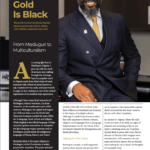Gone are the days of one-size-fits-all leadership. Now more than ever before, leadership transitions are more frequent and complex than ever. Success in this new world of work requires a diverse approach to leadership, where adaptability and openness to different styles in a changing environment are essential.
In any business, whether small or large, the speed of change can be overwhelming. Leaders need to have a range of skill sets, adapting their style to lead change, lead their teams, and lead in different situations.
One practical approach is the “head, heart, and hands” change leadership style. This involves balancing big-picture thinking (head), empathy and people-focus (heart), and attention to detail (hands). By integrating these elements, leaders can navigate change effectively and connect with their teams on multiple levels.
Embracing Change with a Growth Mindset
Change is inevitable, and the pace of technological advancement only accelerates this reality. Leaders must develop a growth mindset, viewing change not as a threat but as an opportunity. This mindset starts with self-awareness and a willingness to learn and explore new possibilities.
Take AI, for instance. Some organizations resist AI, fearing it will disrupt their operations. However, a growth mindset involves exploring what AI can offer and how it can be integrated to improve business processes. Leaders should engage in continuous learning, attend relevant events, and stay connected with forward-thinking peers. By also fostering this mindset within their teams, leaders can turn potential resistance into a collective journey of growth and innovation.
Inspiring Teams to Embrace Change
Resistance to change is a common challenge in organizations. To address this, leaders need to understand the root causes of resistance. Sometimes, resistance may stem from genuine concerns about the proposed changes. Leaders can gain valuable insights and refine their strategies by listening to their teams.
Effective change leadership is a collaborative process. Leaders should involve their teams in discussions about the change, explaining the vision behind it and addressing their concerns. This collaborative approach minimizes resistance and empowers employees to be part of the change, increasing the likelihood of successful implementation.
Building Community in Remote and Hybrid Teams
The shift to remote and hybrid work environments has posed new challenges for maintaining team spirit and cohesion. Creating a solid sense of community in such settings relies on the existing organizational culture, and leadership with emotional intelligence.
Tactical approaches to building community include regular check-ins, informal virtual gatherings, and transparent communication to help maintain a sense of togetherness. Trust is crucial in remote settings. Leaders need to avoid micromanagement and trust their teams to deliver results. By focusing on outcomes rather than monitoring every action, leaders can build a culture of trust and collaboration.
Promoting Work-Life Balance and Wellbeing
Employee well-being is directly linked to team morale and productivity. Beyond flexible work arrangements, leaders must actively promote a culture of work-life balance and mental wellbeing. This starts with recognizing that one size does not fit all.
Leaders should have open conversations with their teams to understand their unique needs. Some employees prefer starting work early, while others are more productive later in the day. Flexibility is key. Additionally, leaders should lead by example, demonstrating their commitment to work-life balance and encouraging their teams to do the same.
Leaders must ensure transparency, manage expectations, and keep everyone on the same page to carry them along. Effective communication is a two-way process: it involves sharing information and listening to feedback and concerns.
Leaders should tailor their communication strategies to meet the needs of their teams, leveraging various channels to ensure the message is received and understood, and keeping in mind that one size does not fit all. During times of uncertainty, it’s important to communicate even when all the answers aren’t available. Keeping the team informed helps prevent misinformation and build trust.
Leveraging Emotional Intelligence and Empathy
Leaders with high emotional intelligence and cognitive empathy are better equipped to navigate change and uncertainty, which are synonymous with the new world of work. Critical aspects of emotional intelligence and empathy include self-awareness, social awareness, self-control and listening. These qualities enable leaders to manage their own emotions and respond effectively to the feelings of others.
For example, if a leader encounters an upset employee, their response should be guided by empathy and understanding to examine multiple facets of the situation. In place of defensive reactions, they should seek to understand the root cause of the employee’s frustration and address it constructively. This approach resolves immediate issues and builds a foundation of trust and respect.
Preparing for the Future of Leadership
The future of work is constantly evolving, and leaders must be prepared for constant and fast-paced change, with the ability to respond to change better and faster. Leaders need to be able to adapt quickly to changing circumstances and guide their teams through a VUCA world of Volatility, Uncertainty, Complexity and Ambiguity.
Visionary thinking is also crucial. Leaders must anticipate future trends and challenges, positioning their organizations to stay ahead. This involves continuous learning and a commitment to innovation. By fostering a culture of agility and change leadership skills, leaders can ensure their teams are well-prepared for the future.
In conclusion, the new world of work demands a dynamic and adaptable approach to leadership. By embracing tailored leadership styles, leading with emotional intelligence and empathy, and fostering a growth mindset leaders can position themselves and their teams for success. The journey involves a commitment to continuous learning to lead and navigate change in the new world of work.











